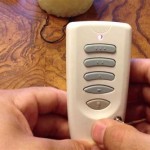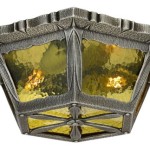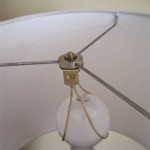Essential Aspects of Best Church Ceiling Lights
Church ceiling lights play a pivotal role in illuminating the sacred space, enhancing the overall ambiance, and creating an atmosphere conducive to worship. Selecting the appropriate ceiling lights requires careful consideration of various essential aspects to ensure harmony with the church's architectural style, liturgical needs, and aesthetic sensibilities.
This article delves into the crucial factors to consider when choosing church ceiling lights, providing valuable insights and guidance to assist you in making informed decisions and creating a visually stunning and spiritually uplifting space for your congregation.
1. Architectural Compatibility
The ceiling lights should seamlessly integrate with the architectural style of the church. For traditional churches, chandeliers with intricate designs and warm, diffused light may be suitable. Modern churches, on the other hand, can opt for sleek, minimalist fixtures that complement the contemporary aesthetic. Proper scale and proportion are also essential, as oversized or undersized lights can disrupt the overall harmony of the space.
2. Liturgical Needs
Church ceiling lights must accommodate the specific liturgical functions of the space. For example, the sanctuary, where the altar is located, typically requires brighter and more focused lighting to enhance the visibility of the sacraments. The nave, where the congregation gathers, can benefit from softer, ambient lighting that creates a welcoming and reverent atmosphere. Consider the different lighting needs of the sanctuary, nave, aisles, and other areas within the church.
3. Aesthetic Impact
The aesthetic impact of the ceiling lights should align with the overall design scheme of the church. For churches with elaborate interiors, ornate chandeliers or pendant lights can add a touch of grandeur and elegance. Simpler churches may prefer more understated fixtures that blend seamlessly with the existing décor. The color temperature of the lights, ranging from warm to cool tones, can also significantly influence the overall ambiance and create the desired mood.
4. Energy Efficiency
Church ceiling lights are often used for extended periods, making energy efficiency a crucial consideration. LED lights are highly recommended for their superior energy efficiency, long lifespan, and ability to reduce energy consumption. Additionally, consider the use of motion sensors or automatic controls to optimize energy usage and prolong the life of the lights.
5. Maintenance and Accessibility
Regular maintenance is essential to ensure the longevity and proper functioning of church ceiling lights. Choose fixtures that are easy to access for cleaning and bulb replacement. Consider the height of the ceiling and the availability of scaffolding or specialized equipment that may be required for maintenance tasks.
6. Safety and Certification
Safety should be a top priority when selecting church ceiling lights. Ensure the fixtures are UL-listed for safety and meet all applicable building codes. Look for lights with sturdy construction and reliable components to minimize the risk of accidents or electrical hazards.
Conclusion
By carefully considering these essential aspects, you can make informed decisions about the best church ceiling lights for your specific needs. Whether you seek grandeur, reverence, energy efficiency, or ease of maintenance, there are countless options available to create a visually stunning and spiritually uplifting space for your congregation.

Led Church Lighting By Craft Metal S

Led Church Lighting By Craft Metal S

Led Church Lighting By Craft Metal S

Led Church Lighting By Craft Metal S

First Congregational Terralux

How To Find The Best Lights For Houses Of Worship Gc Riffs

Led Church Lighting By Craft Metal S

Led Church Lighting By Craft Metal S

Best Stage Lighting Color Temperature For Churches

Best Feature Lighting Ideas For Vaulted Ceilings Loomlight
Related Posts








